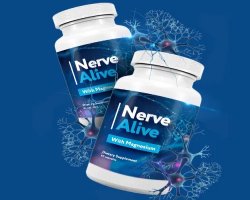Health Effects of Kratom Products You Should Know In Advance

Kratom (Mitragyna speciosa) is an evergreen tropical tree that is indigenous to Thailand, Malaysia, Indonesia, and Papua New Guinea in Southeast Asia. Kratom, the original name for the substance used in Thailand, is a member of the Rubiaceae family. Other species of the Rubiaceae family include coffee and gardenia.
Both the Mitragyna speciosa tree, which is a native of Southeast Asia, and the leaf-derived kratom products that are sold as herbal supplements are referred to as "kratom." Many chemical substances (referred to as bioactive alkaloids) are present in kratom leaves and can have an impact on the body.
Kratom has been used as alternative medicine in the United States to treat diarrhea, opiate consumption, and symptoms of withdrawal. However, clinical studies on its safety and efficacy for these illnesses have not been conducted, and the FDA has expressed concerns about toxicity and potential fatalities associated with kratom usage. In several American states and counties, its use is forbidden.
Both the Mitragyna speciosa tree, which is a native of Southeast Asia, and the leaf-derived kratom products that are sold as herbal supplements are referred to as "kratom." Many chemical substances (referred to as bioactive alkaloids) are present in kratom leaves and can have an impact on the body.
How is kratom used?
The kratom leaves can be chewed, dried, smoked, turned into capsules, pills, bulk liquids, or extract, or boiled into a tea to be ingested. The effects are distinct in that stimulation happens at low dosages, and at larger doses, opioid-like depressive and euphoric effects happen. Treatment of pain, preventing withdrawal from opiates (such as heroin or prescription narcotics), and modest stimulation are among the often used applications.
The FDA states that there is no evidence to back up the use of kratom for medical purposes. Furthermore, the FDA warns against replacing kratom with prescription opioids, even if used to alleviate opiate symptoms of withdrawal. The FDA supports additional studies to learn more about the safety profile of kratom, including its usage in conjunction with other medications. Due to recorded deaths, the FDA currently advises the general public NOT to consume any products that are labeled as containing kratom.
A healthcare professional can prescribe you effective opioid withdrawal treatments that have been approved by the FDA, including buprenorphine (Sublocade), methadone, naltrexone (Vivitrol), and buprenorphine and naloxone (Suboxone). They also claim that there are safer, non-opioid alternatives available for the treatment of pain.
How does kratom function?
Kratom has been used to alleviate pain and opioid withdrawal because of its opioid-like activity. Animal studies indicate that the predominant pharmacologic activity of mitragynine occurs at mu and delta-opioid receptors, as well as serotonergic and noradrenergic pathways in the spinal cord. Stimulation of postsynaptic alpha-2 adrenergic receptors and 5-hydroxytryptamine 2A receptor blockage may also occur. The opioid receptors may be more sensitive to 7-hydroxy mitragynine. Partial agonist action may be involved.
Is Kratom Harmful?
There is little scientific evidence concerning the effects of kratom usage, and no controlled clinical trials have been done to assess if it is safe for human use. The majority of our existing information on this medication is based on anecdotal stories from users and doctors, as well as animal tests.
Kratom is not a restricted substance in the United States, and it is available in a variety of forms on the Internet and drug stores, including:
-
Trimmed leaves (to make tea.)
-
Capsules.
-
Tablets in compressed form.
What Are the Kratom Effects?
Kratom's Short-Term Effects
The drug's short-term effects are difficult and uncertain due to its unique chemical composition. The combination of stimulant-like and opiate-like effects varies with dose, and various users have had significantly varied experiences with the drug even while taking the same quantity.
The Effects of Kratom on Low Doses
Stimulant-like effects predominate at modest doses (1-5 g) of kratom. These are felt immediately and persist for 60 to 90 minutes. While most users believe that these effects are pleasant, some users report an unpleasant sensation of anxiousness and agitation. Kratom's principal stimulant-like side effects are similar to amphetamine, but less strong, and include:
-
Enhanced energy and alertness
-
Appetite suppression.
-
Enhanced sociability.
-
Increased libido.
The Effects of Kratom on Moderate to High Doses
Kratom in moderate to high dosages (5-15 g) produces opioid-like effects that continue for many hours.
Kratom's euphoric "high" is allegedly less powerful than that of other opioid medications, and some users describe the experience as unpleasant or dysphoric. Other opiate-like effects are as follows:
-
Analgesia (pain reduction.)
-
Drowsiness.
-
The mental condition of calm and lucidity.
-
Cough suffocation.
-
Reduction of opioid withdrawal symptoms.
-
Kratom dosages of more than 15 g produce symptoms comparable to strong opioid doses, including profound drowsiness and, in rare cases, loss of consciousness.
Various kratom side effects range in intensity from inconvenient to hazardous. Its adverse effects, like the desired benefits stated above, are dosage dependent and are comparable to those seen in stimulant medications and opiates, including:
-
Pupillary dilation (tiny pupils.)
-
Flushing of the face (blushing.)
-
Tremors or a lack of coordination.
-
Constipation.
-
Sweating.
-
Dizziness.
-
Vomiting and nausea
-
Itching.
Serious toxic consequences appear to be infrequent in user and healthcare professional reports, but there is insufficient data available to assess the exact long-term adverse effects and hazards of kratom usage. Seizures have been connected with the most significant adverse effects associated with large doses of kratom (>15 g).
Long-Term Kratom Effects
According to studies conducted on chronic, high-dose kratom users in Thailand, there are various uncommon long-term negative effects of Kratom usage, including:
-
Face hyperpigmentation, or darkening of the skin.
-
Weight loss and anorexia
-
Psychosis.
-
However, the existing information does not imply that long-term kratom usage harms organs or other body components.
Addiction, withdrawal, hypothyroidism, liver damage, aching muscles and bones, and jerky limb motions have been reported as side effects of kratom.
Kratom addiction and prolonged usage have resulted in episodes of psychosis, including hallucinations, delusions, and disorientation. High-dose usage may result in a rapid heartbeat (tachycardia) and low blood pressure (hypotension). Long-term usage may also result in tremors, anorexia, and weight loss.
In at least one case report, seizures were described when kratom was taken with modafinil. The DEA has also identified seizure-related adverse events associated with recreational kratom usage.
Kratom is well-known to be addictive, as evidenced by its long-standing use by Southeast Asian indigenous. Users in Southeast Asia have reported withdrawal symptoms comparable to narcotic withdrawal and drug-seeking behavior. Because of the potential for misuse, several Southeast Asian countries have limited the use of kratom.
Because kratom is produced from a plant, customers should not assume it is completely safe and "all-natural." While not all botanicals are toxic, drugs with dangerous effects can be derived from them, such as heroin (opium poppy), cocaine (coca leaves), and nicotine (tobacco).
To buy Kratom, choose Pure leaf Kratom. We cater to all customers. We sell a large and diversified product selection, whether you require powder Kratom in bulk, a brand name extract, or capsules in any number. We have the most popular strains and combinations. We are always keeping up with our client's requirements and tastes by selling a variety of new and popular items.










